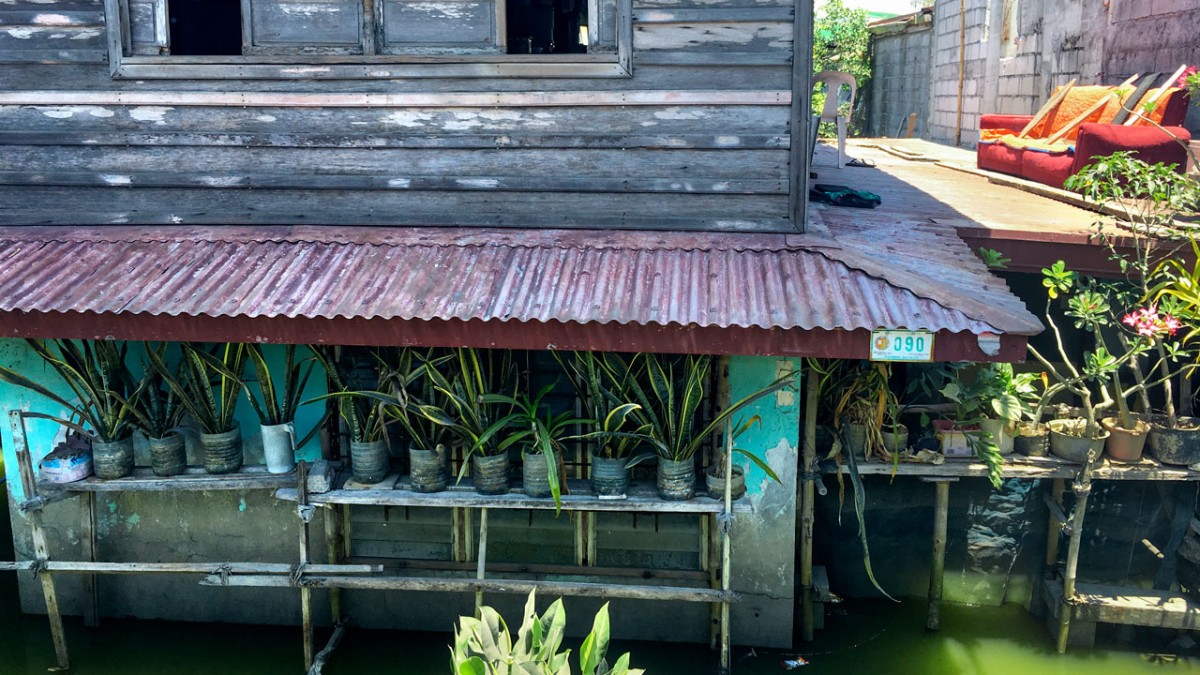
By Megan DeMint
Despite severe, frequent flooding in coastal regions in the Philippines due to climate change, most residents do not consider migration as a short-term solution, according to new Cornell research.
Lindy Williams, professor of global development and a member of the Migrations Lab, profiled two cities, one in Luzon and one in Bulacan, as they face the risks and consequences of frequent flooding.
Despite these problems, “climate-driven migration is not yet widespread,” said Williams, first author of “Major storms, rising tides, and wet feet: Adapting to flood risk in the Philippines,” published in November 2020 in the International Journal of Disaster Risk Reduction.

“It is on a lot of people’s minds, but is not currently the main risk mitigation strategy they are trying to engage,” Williams said. Ties to family and friends and community familiarity continue to motivate most people to stay, the researchers found.
Joy Arguillas, professor at the University of the Philippines at Diliman, and Florio Arguillas, a research associate at the Cornell Institute for Social and Economic Research, co-authored the article.
Floods vastly outnumber weather disasters of all other types – and disasters are hitting vulnerable coastal regions more often, with climate change driving higher sea levels and extreme weather. As a coastal nation, the Philippines ranks third among the world’s countries most vulnerable to weather-related risk; other research suggests that the Philippines is expected to experience a five- to tenfold increase in the number of people living below the projected high-tide line by 2100.
Williams and her team collected data over the course of two years, engaging with a range of community members including local residents, government officials, flood evacuation workers and health workers.
The researchers found that government officials and residents cited widespread and ongoing problems such as garbage in waterways that contaminate water, safety concerns related to evacuation, negative health effects from flooding, saltwater incursion from routine tidal flooding and higher tides affecting burial options.
“Most focus group participants had a strong sense of place and occupational attachment,” Williams wrote in the article, “and said that if they had the money they would prefer to use it to elevate or otherwise modify their current homes than to move away.”
Staying often involved demanding adaptions, such as changing livelihoods, taking on extensive infrastructure projects to elevate homes and relying on both the government and peers in the community for aid. Through installations of flood gates, walls to block water and drainage system cleaning, members of both communities worked to remain in place amid evolving risk.
People who did opt to migrate to safer localities often left suddenly – and only when climate impacts grew to an intolerable level.
“Thus far, retreat has not been managed in a systematic way,” Williams said. During field visits, she and her team were shown abandoned housing in standing water that still held ruined belongings.
One set of families at heightened risk had been relocated to other communities that could offer housing and employment. During her next visit to the field, however, Williams learned most of the families had moved back, most citing missing that home community as the reason.
Community members also mentioned not having enough money, not having the capacity to move or being unsure about where they would live.
As often happens with migration patterns, said Williams, people who have resources fare better. They can leave and also have other places to go. If they stay, those who have sufficient financial resources can build second stories on their homes, add layers to their ground-level flooring or make other home modifications.
As one research participant noted: “If the person has money, then he will raise his house up. If you don’t have the money, they have to suck it up and deal with what you have.”
During more intense flooding events, authorities often call for local residents to evacuate. However, many people reported resistance to evacuation because they fear that their homes might be looted. Some families evacuate but leave behind one member who keeps an eye on the home and belongings.
The pandemic has made evacuation even more complicated, according to the article, “raising new questions regarding the costs and benefits of taking shelter in crowded evacuation centers.”
More recently, Williams began working with John Zinda, assistant professor of global development, senior extension associates Robin Blakely-Armitage and David Kay, and Sarah Alexander, Ph.D. ’20, to similarly study perceptions of flood risk closer to home – in Troy, New York, a city on the Hudson River.
In a new 750-household questionnaire, questions about flooding and the pandemic examine how people assess risk and respond to it. In addition, Williams and colleagues collected demographic data, as well as information on preferred news sources and political affiliation that will allow them to understand if there is any correlation between these factors, and perceptions of risk and associated behavior.
In preliminary research, the team has identified a number of reasons for low uptake of flood insurance. They are now hoping to contribute further to knowledge about flood risk, risk perception and adaptive measures taken along the Hudson in New York state and eventually beyond.
Megan DeMint is a communication specialist supporting Global Cornell.